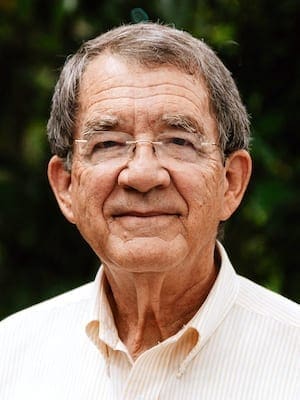Interest in the public debut of the film, “A Beautiful Day in the Neighborhood,” has reminded me of some fun we used to have in an “Introduction to Religion” course over the years.
When discussion would emerge on how religion functioned in the media, we would naturally review the lineup of televangelists and mega-church pastors who enjoyed TV celebrity status.
When I asked students who they thought was the TV minister who had the all-time largest viewing audience, the replies, according to the decade, would range from Billy Graham and Robert Schuller to Jim and Tammy Bakker to Joel Osteen, among others.
With none of these being the “right” answer, I’d give a clue: “The first name is Fred.” To which someone would inevitably reply, “Flintstone.”
Eventually, we’d get around to discovering that the answer was the ordained Presbyterian minister whose congregation included any child with access to a television.
The surprise feature of this discovery was a testimony of how prevalent was the traditional image of minister as “preacher” and “church leader.”
It has been evident for some time that the concept of ministry has been in a process of broadening beyond these specific traditional roles to include a much wider range of official and unofficial expressions.
Many of the roles were already there in chaplaincy, social work, counseling, teaching and the many forms of institutional leadership, but the strength of the traditional image remained.
When I left my early pastoral responsibility to accept my first full-time teaching assignment, one dear member of our congregation offered her good wishes but expressed some sorrow that I was “leaving the ministry.”
Hers was not a lack of appreciation for other forms of service; she simply was reflecting a concept of ministry that was largely defined by her experience with church life.
Mister Rogers is certainly not the only or first person to live out a calling to ministry in a non-traditional role, but he seems to have served as a public and accessible prototype of a concept of ministry that is defined more incarnationally than ecclesiastically.
This evolution in the concept of ministry has not only come to embrace professional service roles as “ministries” when engaged as a response to a sense of spiritual calling.
Educational emphases in congregational life in recent years have encouraged a concept of ministry that includes the service of every disciple.
Mottos similar to “every member a minister” have appeared over the past two decades as faith families have encouraged members to identify personal gifts and to explore ways to put those gifts at the service of the church’s larger ministry.
Specialized services still receive the mantle of ordination as an affirmation of specific responsibility and leadership.
This, in itself, communicates an important implication of how a community of ministry functions with both effectiveness and faithfulness.
The broadening of the concept of ministry does not diminish the significance of the practice of ordination; it refocuses it in the direction of service rather than a tendency to authority, which history has shown us to be a seductive temptation of power and influence.
“Every disciple a minister” seems an appropriate expression of the Reformation’s principle of the “priesthood of the believer” – ordained and un-ordained alike, working together in a common calling to reflect in personal life, in formal programming and in public advocacy the creative and transformative power of grace, mercy and justice in personal relationships and in the larger society.
If the much-anticipated “A Beautiful Day in the Neighborhood” encourages widespread reflection on how a life pattern of attentive kindness and compassion defines the essence of ministry, and if viewers of the film can see the possibility of incorporating something of Mister Rogers’ personality and perspective into the arenas of their lives, then it is not hard to imagine a healthy transformation of whatever neighborhood we happen to occupy.
Professor emeritus of religious studies at Mercer University, a member of Smoke Rise Baptist Church in Stone Mountain, Georgia, and the author of Keys for Everyday Theologians (Nurturing Faith Books, 2022).


